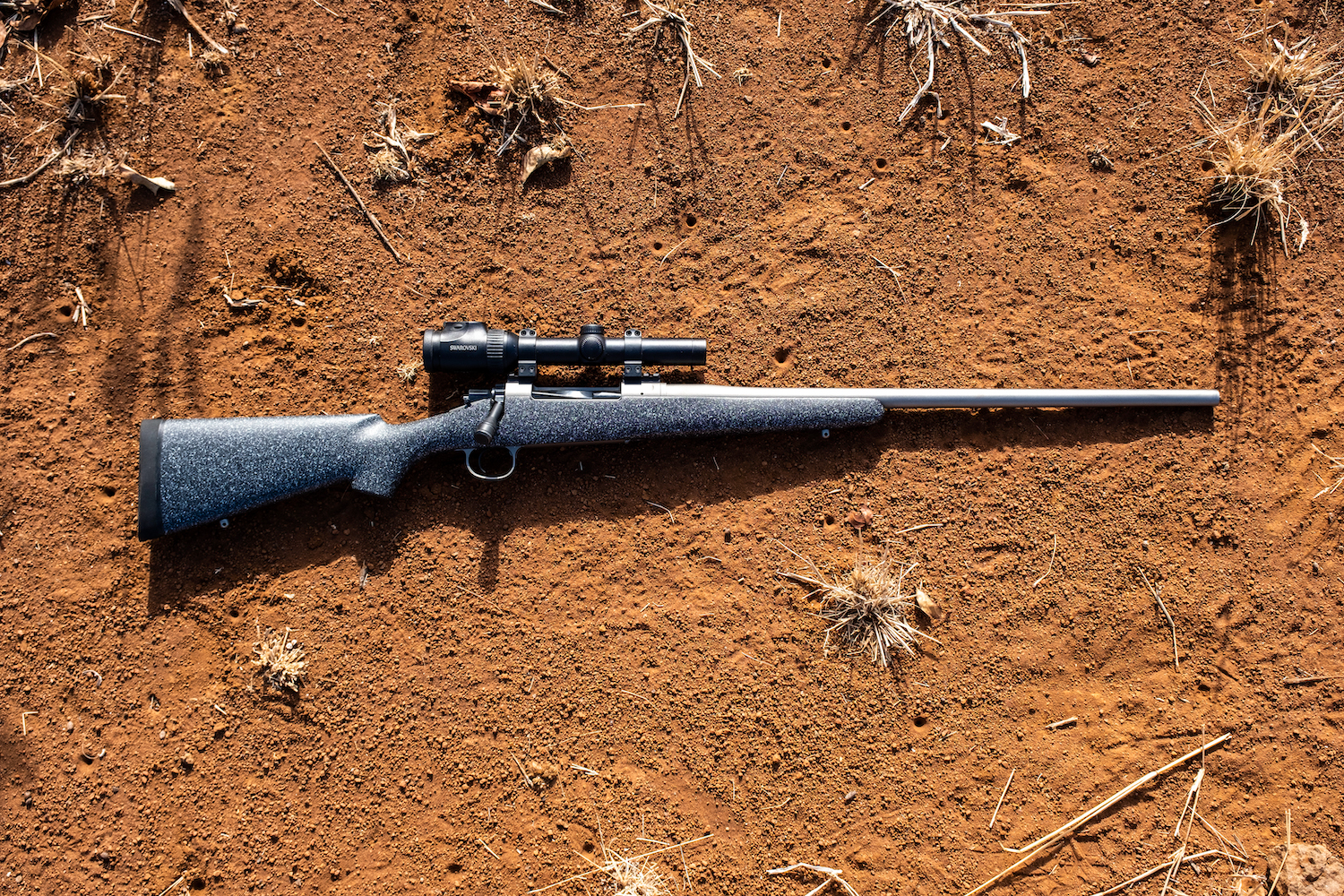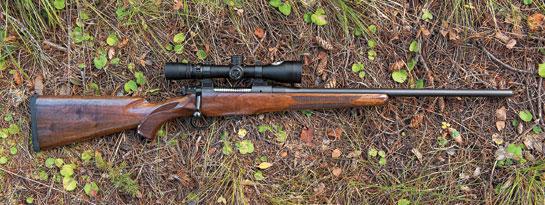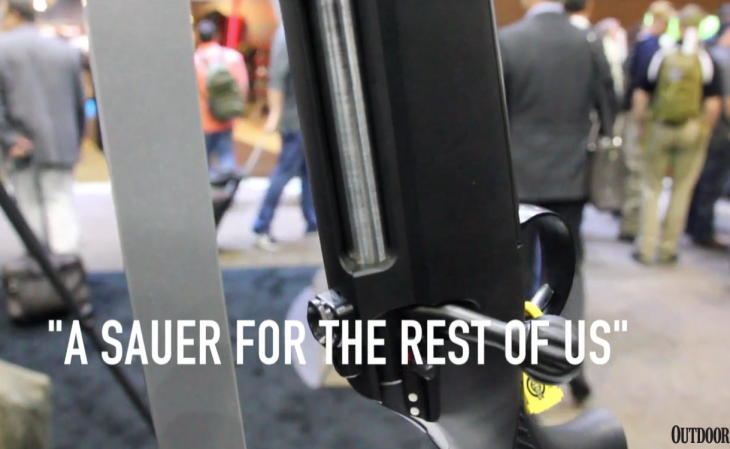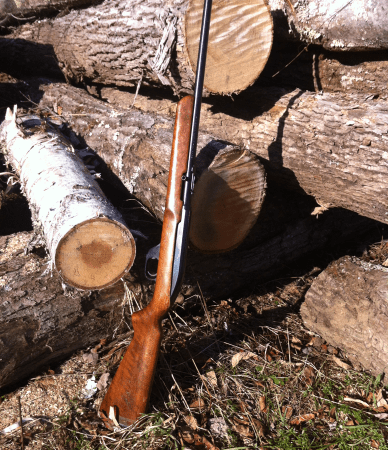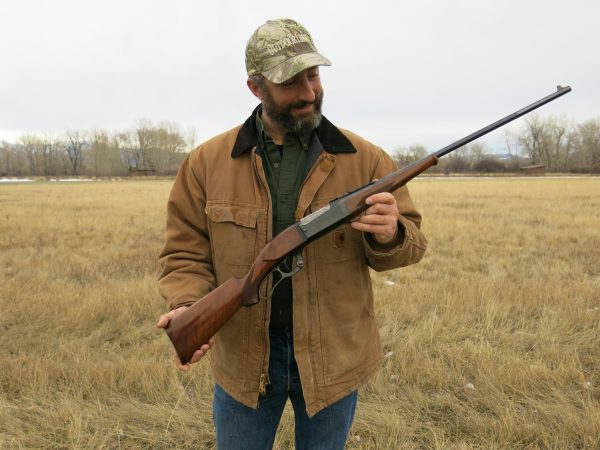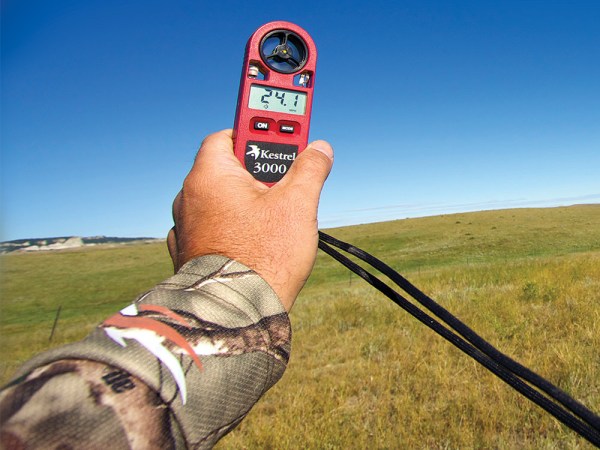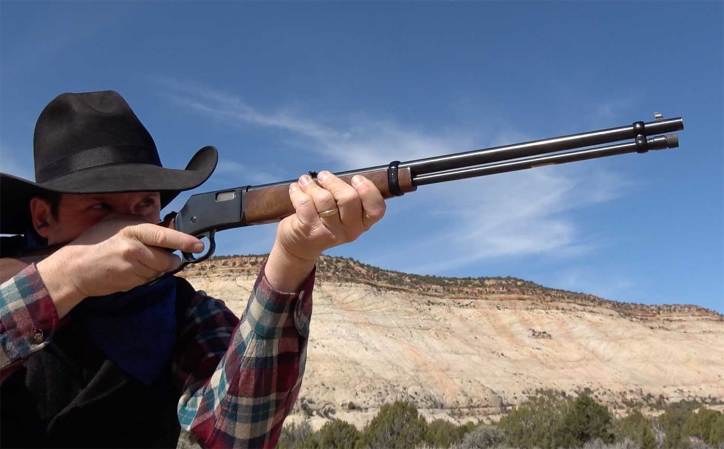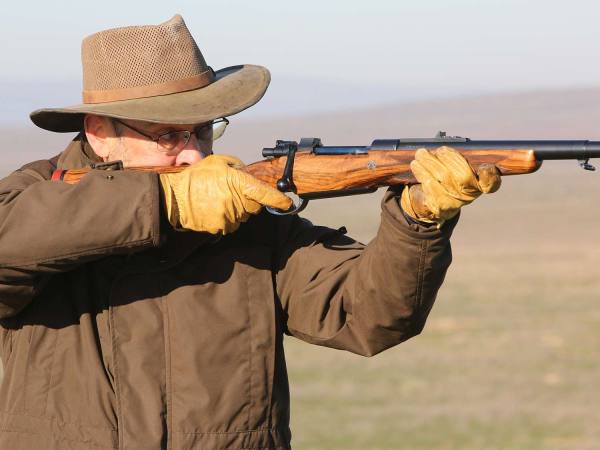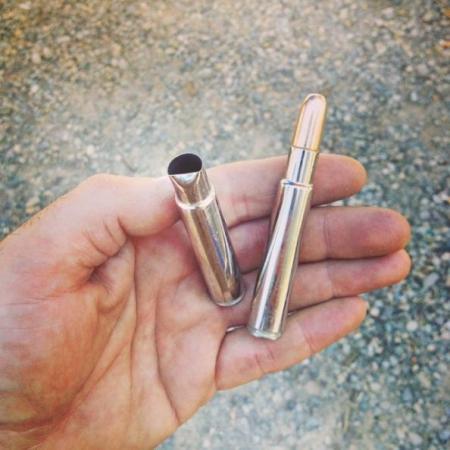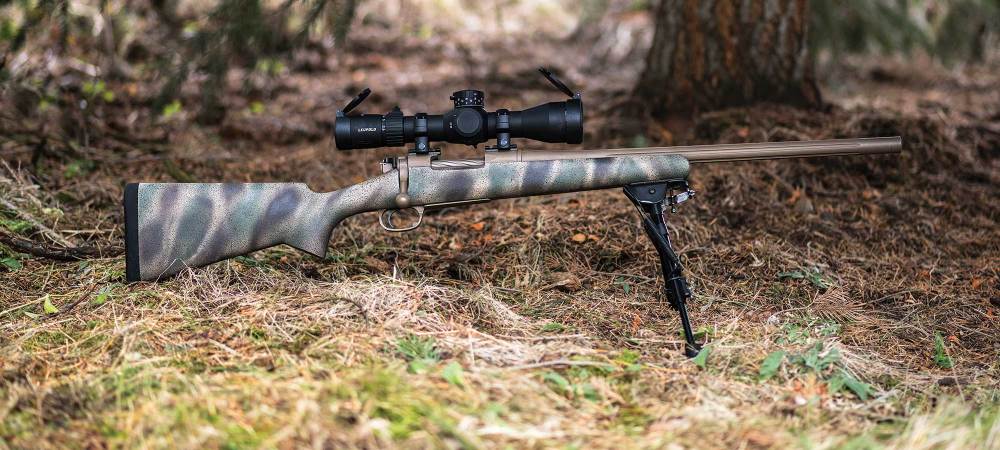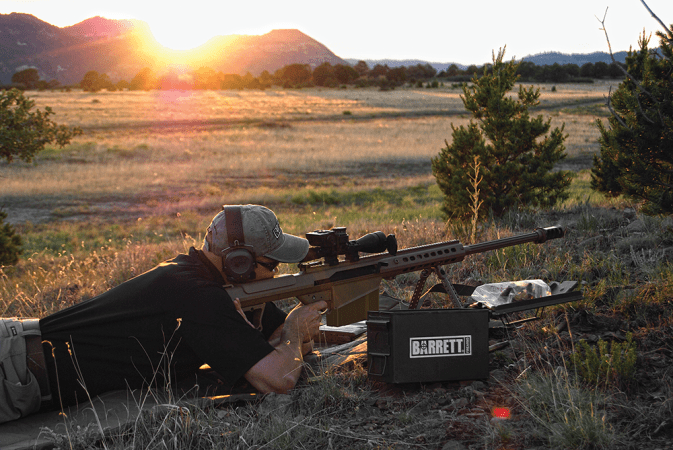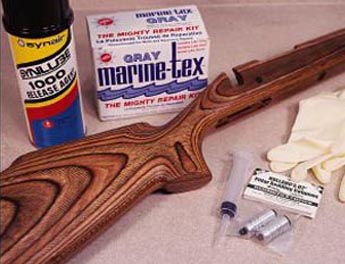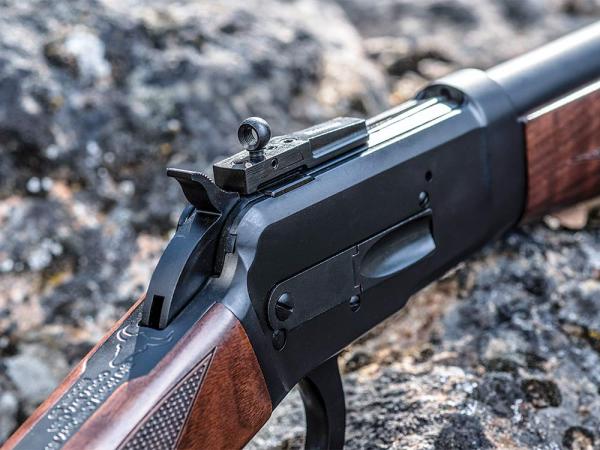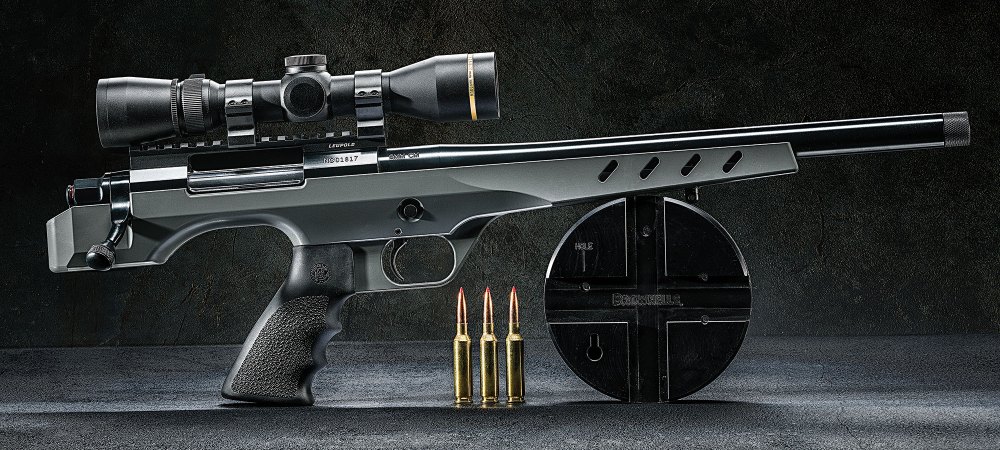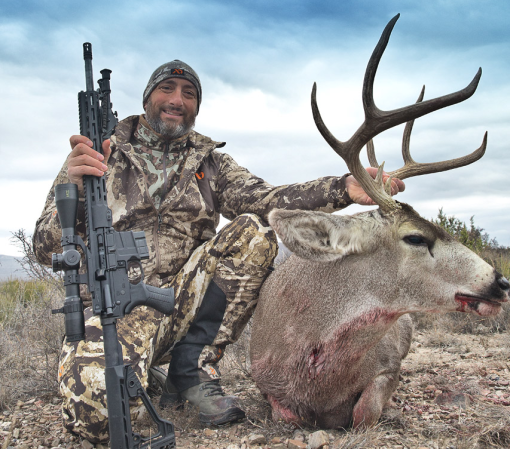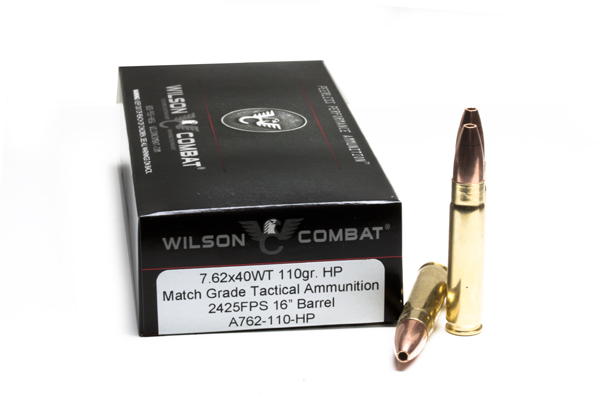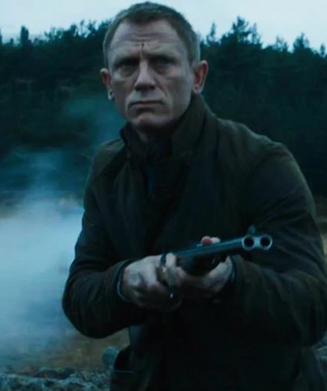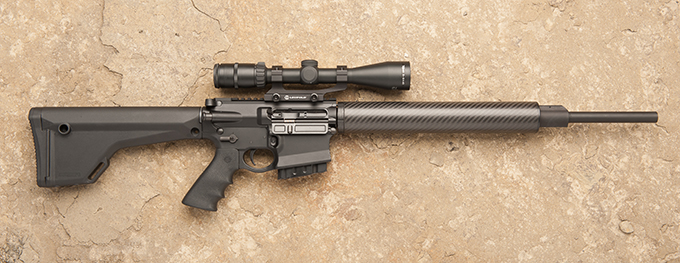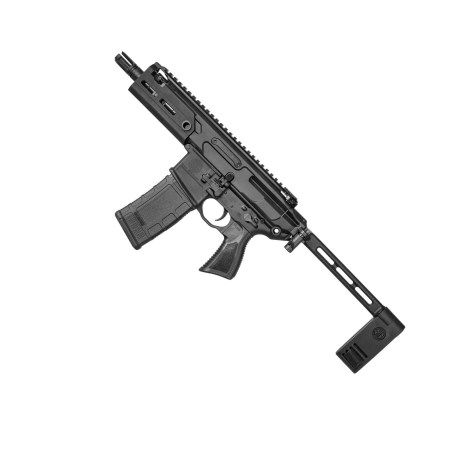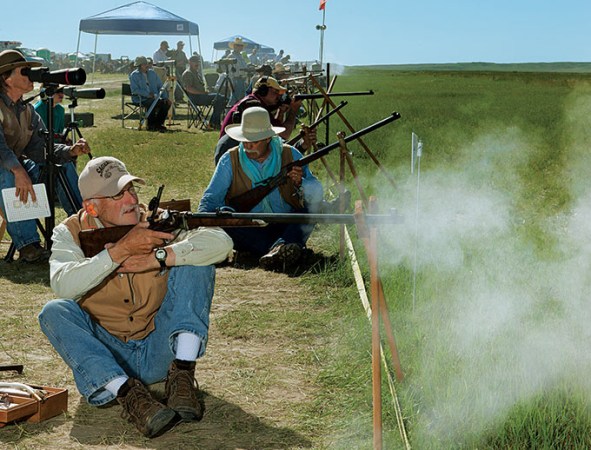We may earn revenue from the products available on this page and participate in affiliate programs. Learn More ›
Being the first to test a rifle on dangerous game requires a certain leap of faith. Normally when someone hands me a new rifle I regard it with a healthy dose of skepticism. I’ve been burned too many times before. But I had reason to be confident with the new Nosler 21 I carried in Zimbabwe a few weeks ago, even as my guide and I plunged into a field of head-high grass that contained a couple hundred head of Cape buffalo—affectionately known as “black death” among hunters in Africa.
My optimism was three-fold. First, I’ve owned and shot Noslers since they first started making rifles back in 2005 and never once have had a single issue. Two, the components that they’re using in the new Model 21 are all best-in-class. Third, mine was chambered in a great round for this kind of work—the .375 H&H Magnum. That round, the grandfather of all belted magnums, has proven its worth on dangerous game for more than a century and by my lights is the finest all-around big-game hunting cartridge ever created.
Initially, that chambering was a one-off for my hunt. The lineup of cartridges when the Nosler 21 was announced didn’t include the .375 H&H. After the fine performance it gave in Africa, however, Nosler says it will soon make some rifles in .375 as well. I think that’s a good move, not only for hunters heading to Africa, but also for hunters targeting large bears in Alaska and Canada. Before delving into the details of the rifle, here are the basics:

Nosler 21 Specs
Action: Mack Brothers Evo
- Machined from a solid billet of 416 stainless
- EDM cut bore and raceway
- Self-indexing recoil lug
Bolt: One-piece bolt body with two-lug design
- Toolless disassembly
- Modified M16-style extractor
- Nitride coated
Trigger: TriggerTech
- Adjusts from 2.5 to 5 pounds
Barrel: Shilen No. 3 Contour
- Hand-lapped
- 416 stainless
- Threaded muzzle
Stock: Carbon fiber reinforced with Aramid
- Aluminum pillars
- 1-inch recoil pad
- 13.5 in. length of pull
Cartridges: 22 Nosler, 6.5 Creedmoor, 6.5 PRC, 26 Nosler, 27 Nosler, 280 Ackley Improved, 28 Nosler, .308 Win., .300 Win. Mag., 30 Nosler, 33 Nosler
Price: $2,295 MSRP
Award-Winning Design
One thing worth noting is that since we published this review, the Nosler 21 also excelled at our annual gun test, where it took top honors as the best new hunting rifle of 2022. That sample, chambered in 6.5 Creedmoor, shot the smallest group of the test, a .266-inch 5-shot group with Federal’s 140-grain Sierra Matchking load, and printed groups that averaged .855 inches with a variety of ammo.
You can see from that lineup of cartridges that Nosler is looking to position the Model 21 as a high-performance rifle. “High-performance” is verbiage that marketers love to spout, but what does it mean in terms of how a rifle does in the field? And does the Noser 21 live up to that claim? The equivalent in baseball would be a five-tool player—in other words a rifle that exceeds in every relevant category. Those would be reliability, accuracy, balance, and ergonomics.
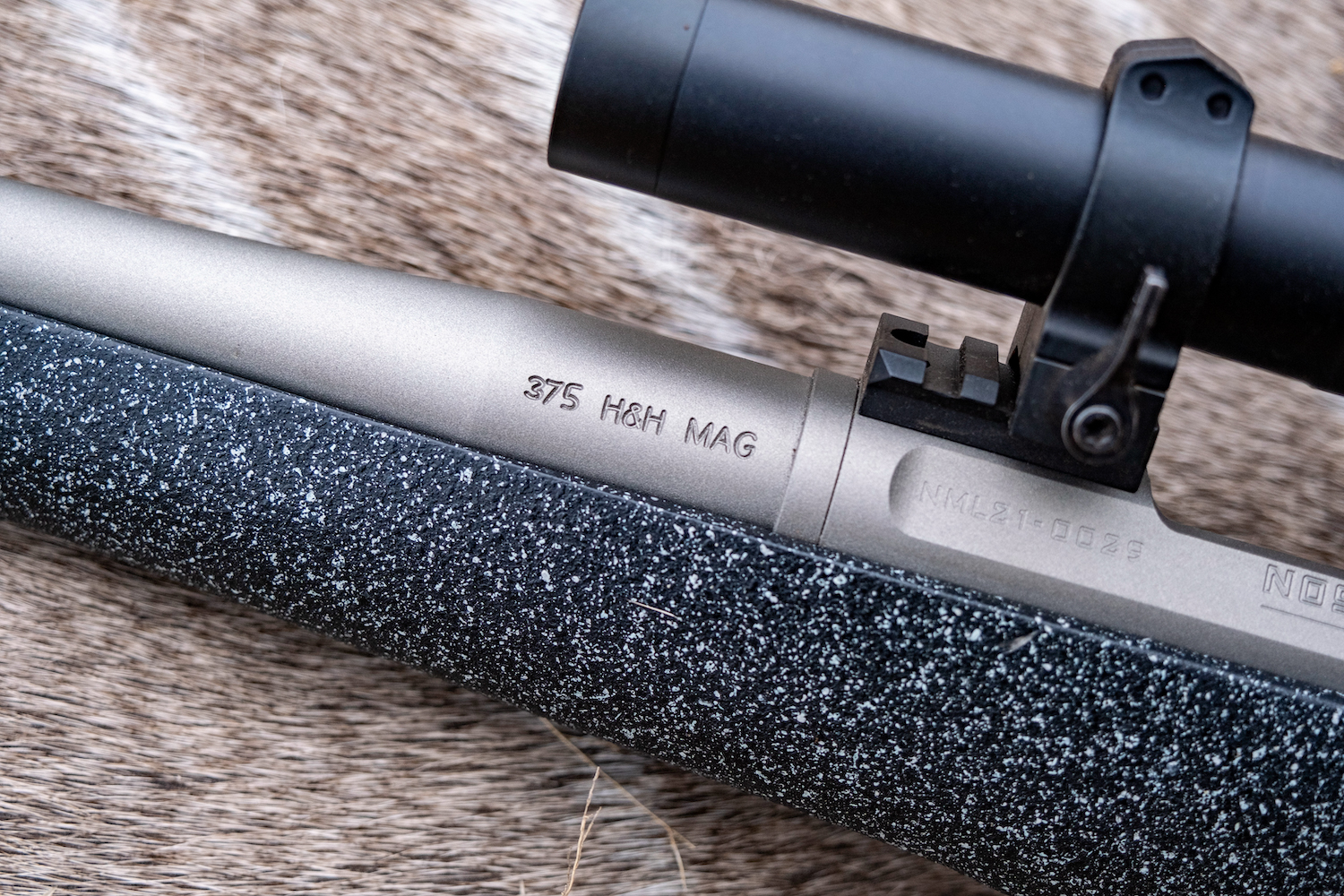
Nosler 21 Accuracy
While the .375 H&H has never been numbered among the world’s most accurate cartridges, over the years I’ve had many rifles shoot it surprisingly well. That was the case with my Model 21. After I got back from Africa, I had Nosler generate a report with my rifle from their ballistics lab using their high-tech Oehler system, which records a pile of data including muzzle velocity, environmental conditions, and group size.
Most of this shooting was done with 300-grain Partitions, which is what I used on all the game I shot in Africa. The average size of the five 3-shot groups was .835 inches at 100 yards, with the smallest coming in at .585 inches. The muzzle velocity with this load out of the 22-inch barrel clocked 2510 fps. For good measure, I had them shoot the 260-grain Accubond as well. That 3-shot group measured .610 inches with an average muzzle velocity of 2715 fps.
For any hunting rifle this is very good performance. For a dangerous-game rig it is outstanding. Combine that accuracy with the .375’s wrecking-ball terminal ballistics and one-shot kills on even the largest game will be the norm.
The barrels that Nosler has put on the Model 21 deserve the lion’s share of the credit for this. They come from Shilen Rifles Inc., down in Ennis, Texas, and are all hand-lapped and built to extremely high standards.
Balance and Ergonomics
Though these are separate categories, I’m going to talk about them together since there is a fair bit of interplay between the two. Rifle balance is impossible to quantify with data and resists concrete description since it is based in feel. This doesn’t make it any less real, however. A rifle that is well balanced settles its weight between the shooter’s hands and moves in a lively fashion when brought into action.
A well-designed stock goes a long way toward achieving this quality, and the stock on the Nosler 21 does just that. It has a flat comb in the American classic style along with a trim grip and slender fore-end. Now, the rifle I shot was a pre-production sample and according to Nosler the stock on the final version will have moderate palm-swells on each side of the grip for ambidextrous operation and a more secure handhold. My one criticism of the stock is that it felt a touch slick for my taste—particularly for a dangerous-game gun—and hopefully this fixes that issue without compromising the rifle’s nimble handling. Another way to address that would be with a paint with a bit of texture in it.
It’s one thing to be able to get a rifle into play, and another matter to have it run well. The action on the Nosler 21 is a modified Evo from Mack Brothers. For one, it is the first long-action Evo. Beyond that it has been “Noslerized” with flats machined into the sides and on the bolt shroud to give it some of the same design elements as the Nosler 48 action. It also has an open top to easily single-feed rounds and to access the action in case you need to clear a malfunction or have some other issue.
Innovative Recoil Lug
Another clever feature on the action is the recoil lug. The lug isn’t machined into the action—which is nice but adds cost—but it does have a hex-shaped cutout that slides over the barrel and indexes on the male version of that pattern that is machined into the face of the receiver. Not only does this create a rock-solid connection between the recoil lug and the action, but that raised bit of metal on the face of the receiver gives the action a few more threads of engagement for the barrel. That’s a win-win.
The raceway is EDM cut and with the nitride coating on the bolt the action is slick as a campaign promise.
Unless you keep close tabs on the precision rifle market you might not be familiar with Mack Brothers, but they make some of the tightest and smoothest running actions for bolt guns out there. The raceway is EDM cut and with the nitride coating on the bolt the action is slick as a campaign promise. Minimal effort is needed to manipulate the bolt and I had no issue working the gun while it was mounted on my shoulder. The crisp trigger is from TriggerTech. This model adjusts from 2.5 to 5 pounds and on my sample broke at 3.2 pounds, which is as light as you want to go with a dangerous-game rifle.
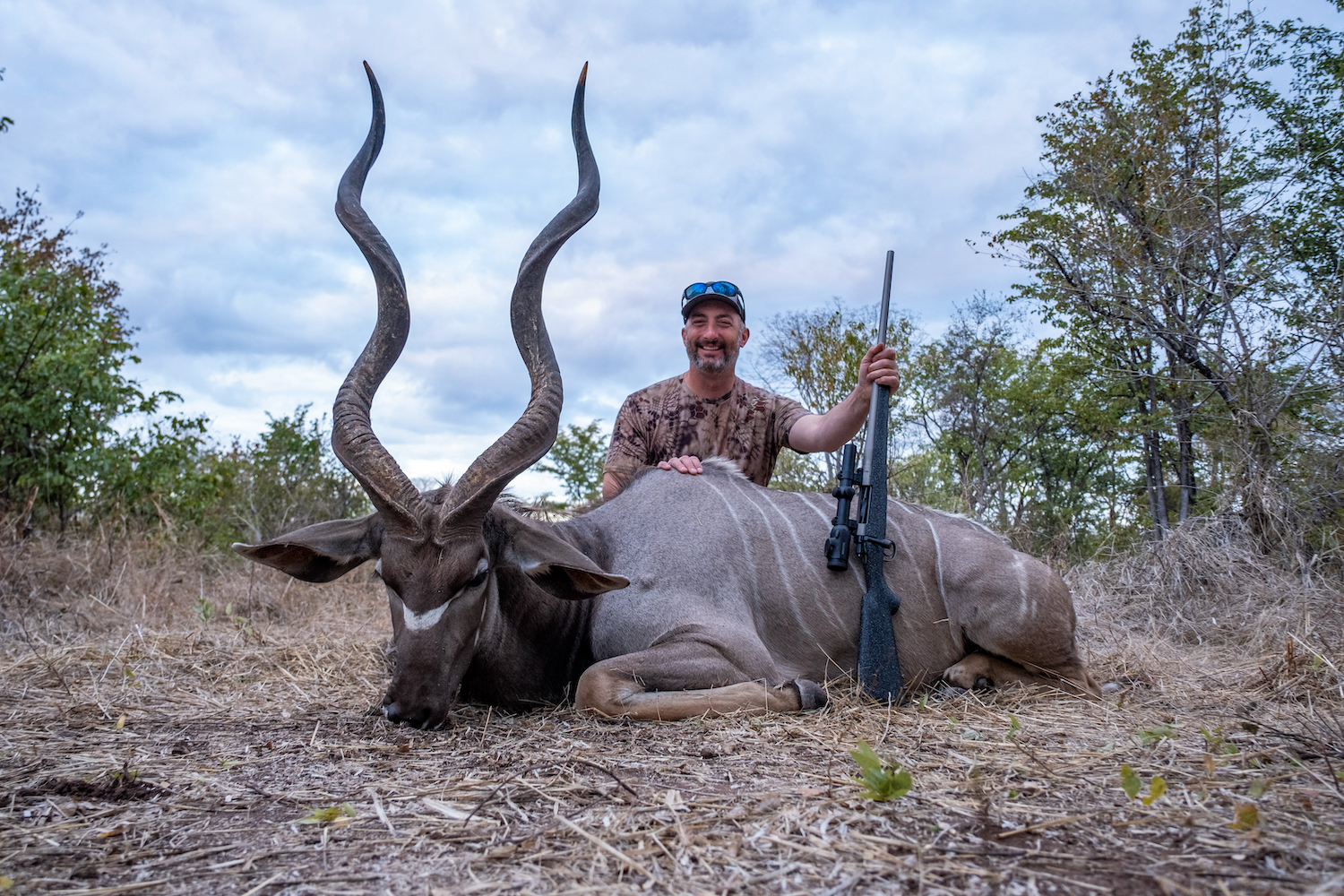
Hunting Kudu
The moment that best illustrates the Nosler 21’s superior handling qualities occurred a week into the hunt. We were bouncing along a sandy trail in my guide Rob Lurie’s safari rig when we spotted a small herd of kudu that contained a very fine bull. The cover was fairly thick and they were standing about 100 feet off the road. I didn’t need to be told twice (or even once for that matter) that the bull was a shooter. We motored 40 yards past the group and the guide hit the brakes. I was out of the truck in a flash and grabbed the rifle from one of the trackers and started running back toward the kudu.
I racked the bolt as I ran and by the time I got there the cows had sprinted off. The bull was about to as well but hesitated for the briefest moment. I brought the rifle up and shot through a narrow opening in the trees. He fell to the ground as if poleaxed and I ran toward him and chambered another round. I knew I had either caught the spine or hit close enough to stun him and that he was going to need another round. He regained his feet and ran. I swung on him like he was a rabbit in a thicket and tumbled him with the next shot, putting him down for good.
All this transpired in a matter of seconds without any conscious reflection on my part. The rifle functioned like an extension of my body. That’s good balance and ergonomics in action.
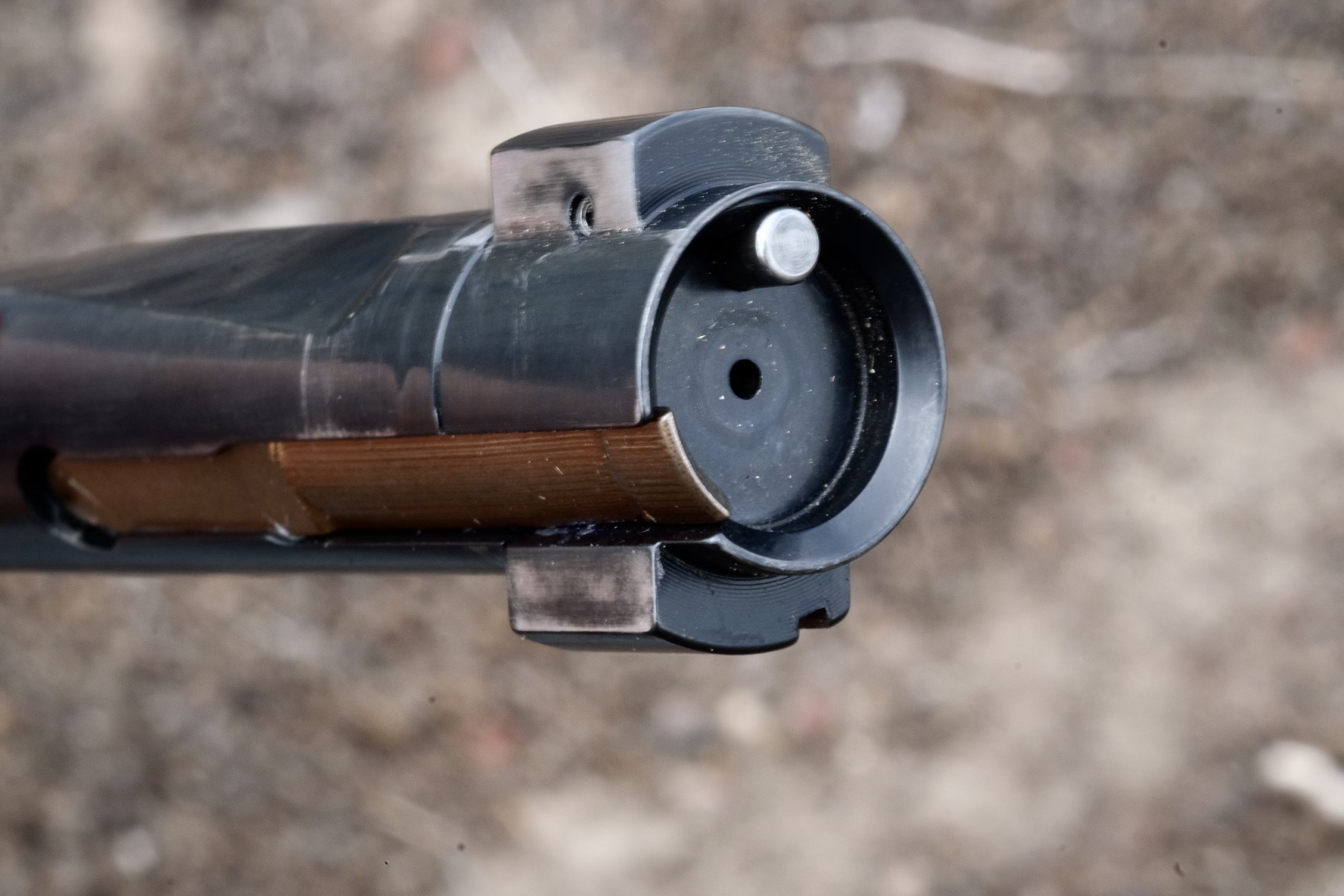
Reliability
With its tapered case and shallow shoulder, the .375 H&H was designed to feed easily and extract reliably in unforgiving tropical climates while being used on dangerous game. This was a bigger concern back in 1912 when the cartridge was introduced as the gun powders of the time were less stable than what we use today and pressure spikes (leading to stuck cases) were more likely, especially when hunting in hot environments. But still it was a comfort knowing I had a cartridge with that pedigree while playing hide and seek with Cape buffalo in the tall grass.
The Nosler 21 lived up to the promise of the cartridge. With the internal box magazine loaded to its 3-round capacity and an empty chamber the bolt had no difficulty engaging the rim of the cartridges and guiding them smoothly into battery.
I didn’t have any extraction or ejection issues either. The M-16-style extractor (which can be removed from the bolt without tools if needed) worked perfectly and the brass—whether spent or loaded—cleared the action every time I cycled the bolt.
We spent two days in the herd of buffalo trying to find the right bull. That amounted to many hours in proximity to these massive and temperamental bovines. The cover was so thick that we’d only catch brief glimpses of horn and black hide, even though they were close enough to hit with a rock much of the time.
When the moment did come, and a good old bull stepped into the open, a single shot put him down. Though, as always, I put an extra bullet into him as we approached him on the ground. I didn’t want to become another example of the adage that it’s the dead ones that kill you when tackling dangerous game.
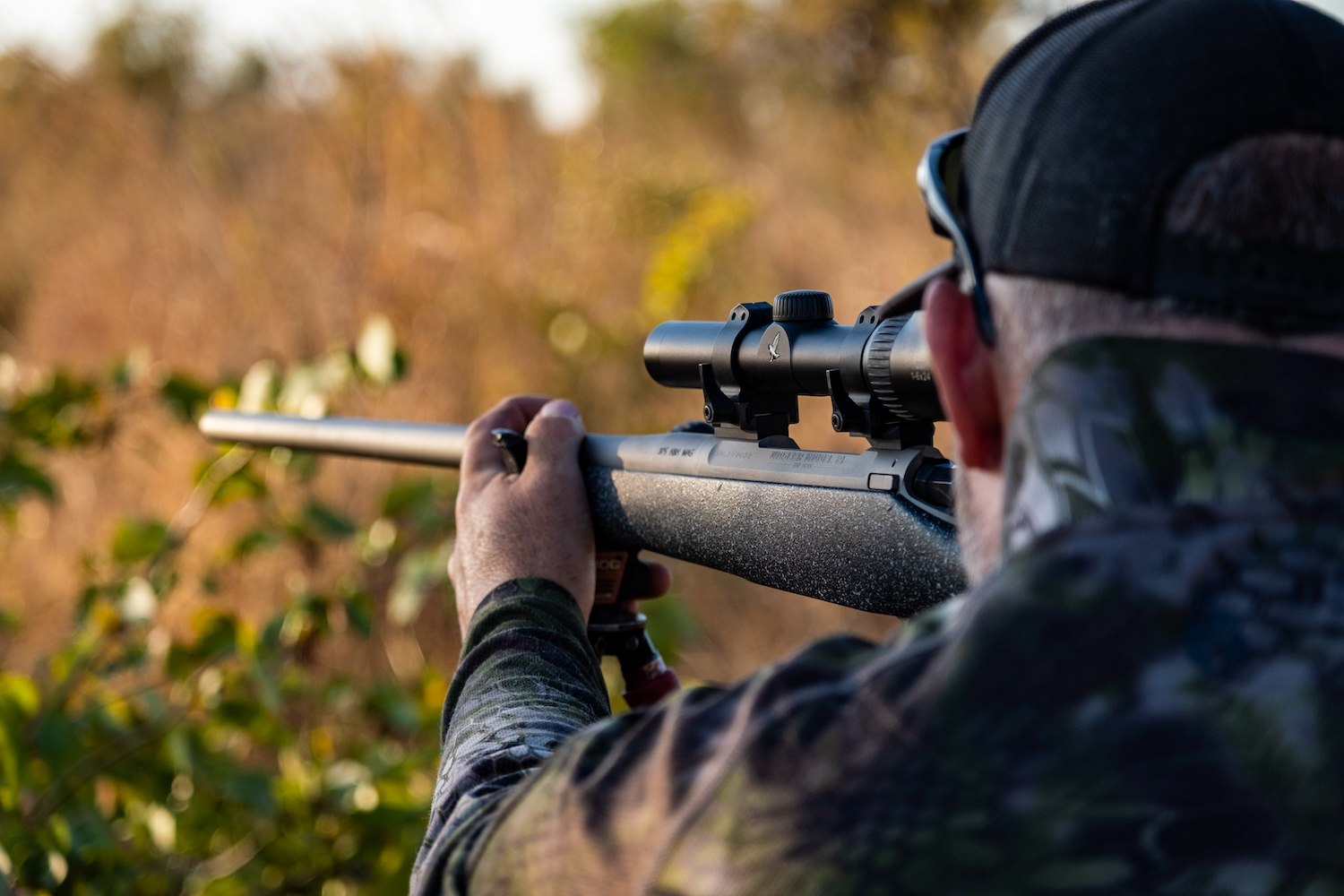
Nosler 21 Beyond Africa
The rifle’s weight struck me the moment I picked it up. It’s fairly light—not usually something you want in a thumper like the .375 H&H. Unscoped mine’s 7 pounds 3 ounces. With the Swarovski 1-6×24 mounted it weighs 8 1/2 pounds. Normally, I’d want a .375 to carry another couple pounds to help with the recoil, but after putting about 60 rounds through the Nosler 21 I think its weight is perfect.
While you can’t repeal Newton’s Third Law of Motion—for every action there is an equal and opposite reaction—with the right stock geometry and a good recoil pad, heavy recoil is much more tolerable. And the Nosler 21 has both.
As I touched on before, I think this rifle is about ideally configured for work in Alaska as well as Africa. For hunting big bears—or hunting in bear country—a synthetic stocked rifle that hits hard, runs reliably, handles harsh environments without complaint, and is easy to carry is exactly the medicine you want.
Looking at a production version of the Nosler 21 in .375 H&H, I’d swap the front swivel stud for a barrel band and I’d add a bit more texture to the stock to improve the grip. Other than that, the rifle is good to go.
Future of the Nosler 21 Platform
I was—and still am—a big fan of the Nosler M48 action. That action is one of the best made today for pure hunting rifles. But because it has a proprietary footprint it is difficult to adapt the M48 for other uses. The Model 21 has no such issues. Since the action has a Remington 700 footprint there is a whole world of possibility when it comes to future iterations of the Model 21. Want to make a lightweight rig that takes standard AICS detachable magazines? No problem. Same if you want to go the other way and make a heavy-barreled long-range shooter for ELR competition or just for popping off at prairie dogs at 1,500 yards. Or if they wanted to make an out-of-the-box gun for PRS or NRL matches. This new platform creates a lot of opportunity for Nosler and it will be interesting to see where they take the rifle.
In the meantime, this is a very strong introduction and I’m confident that the Model 21 is going to be a win not only for Nosler but for any hunter who adds one to their collection.

